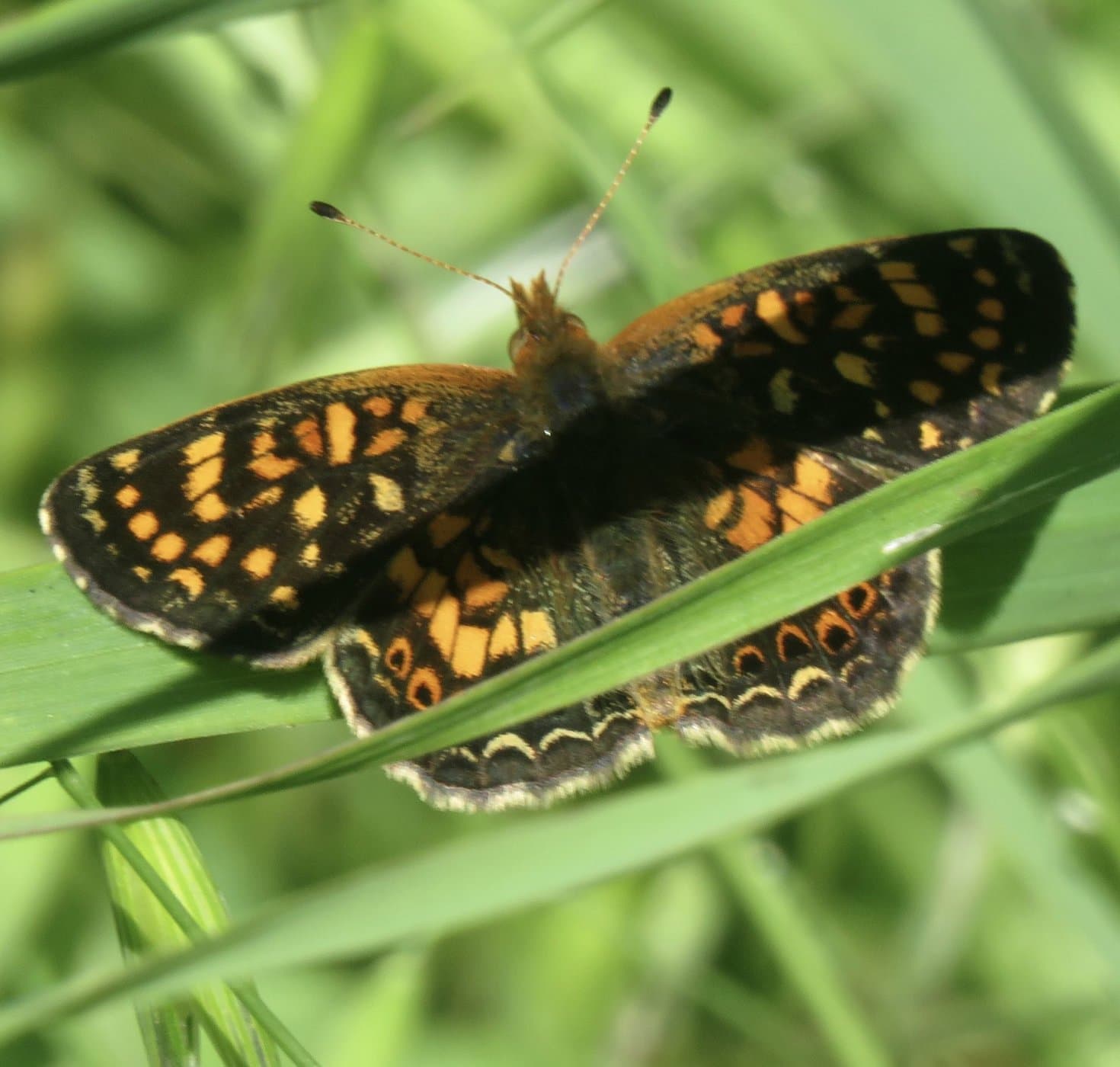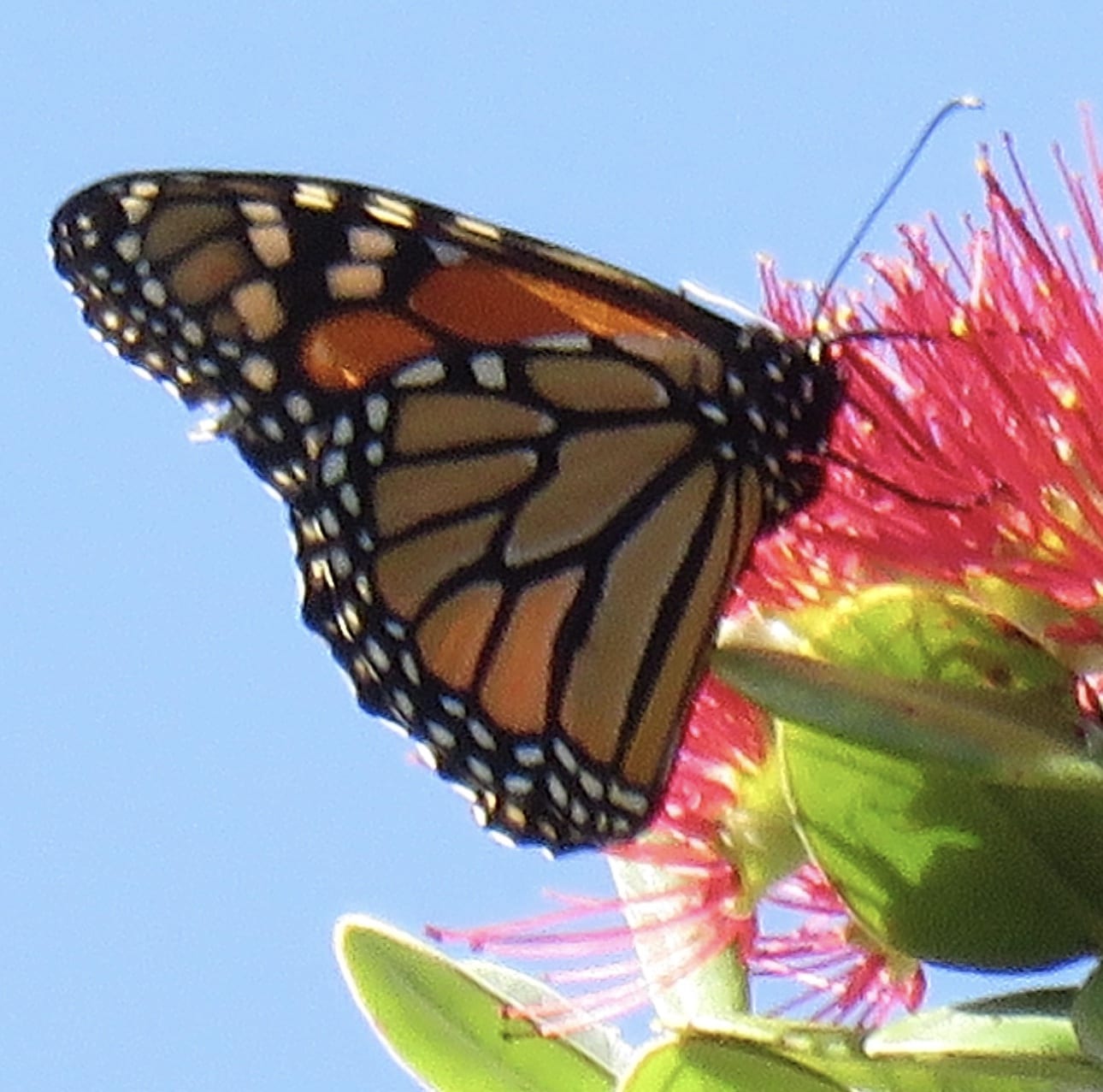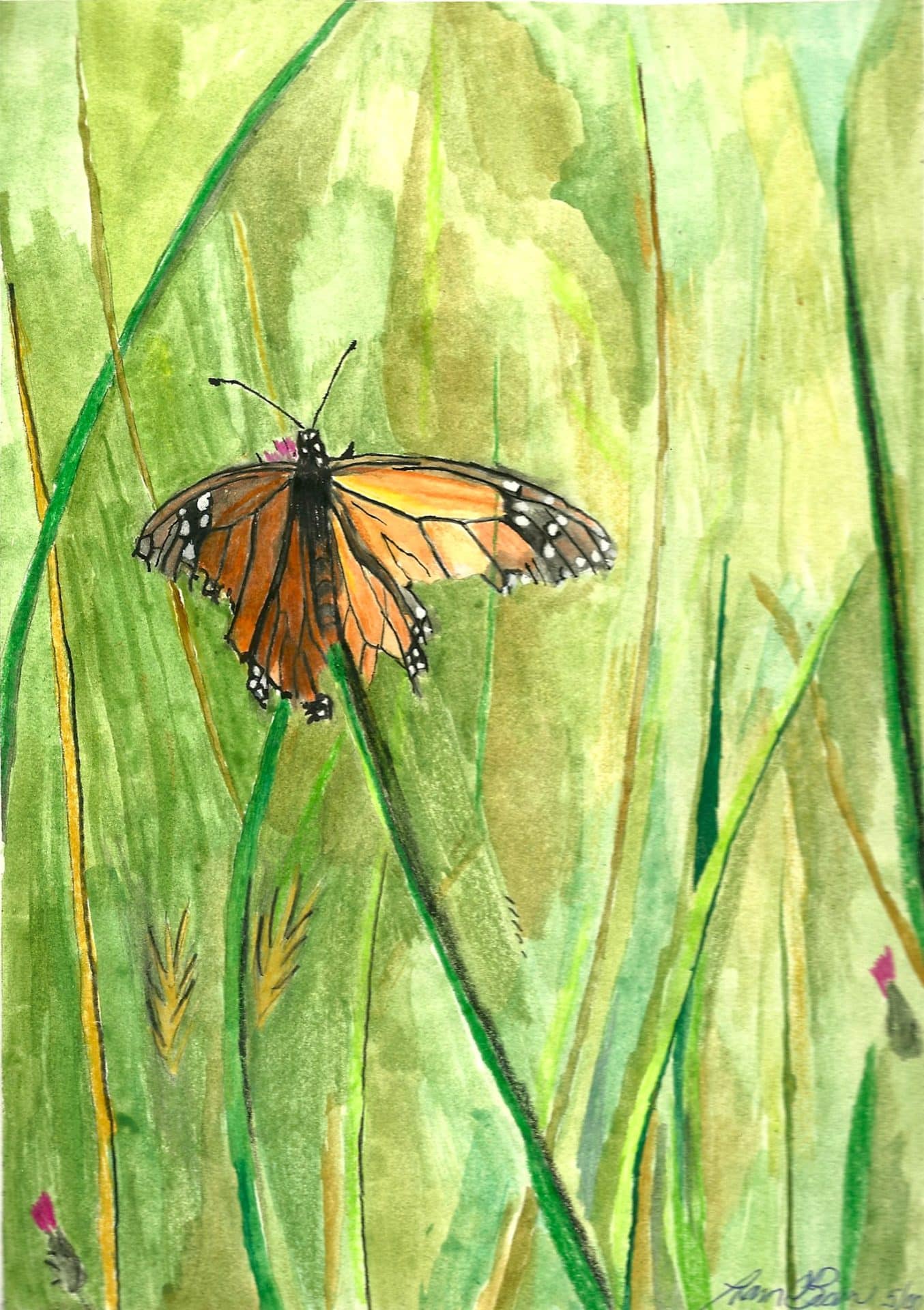Fall is the New Spring
By Liam O’Brien
It’s almost a cliche – comes the Spring comes the butterflies! Since they coevolved with flowering plants for the most part it’s true. But did you know that fall is actually the best time to see them? Females disperse far beyond their known ranges to mix up the genetic pool and one has an opportunity to see species they don’t usually get to see in the spring. Of course the opposite is true as well. Spring butterflies are normally done by mid May.
Nectar sources were just about spent when I started the second half of this year-long inventory (which has now been extended another three years up here – yippee!) I was pleased to see Field Crescents (Phyciodes puchella) had found the Pacific Aster they need to host on.

This pretty little butterfly patrols in and out of the aster all day and takes advantage of the Coyote brush just coming into bloom. Small butterflies visiting smallish flowers. The girls have a different pattern than the boys and it took me awhile when I first began this mania that I wasn’t looking at a different species. This butterfly is bivoltine (two distinct flights in the year) in the city but this fall flight seems to be easier to see for folks. There was no spring flight up here as far as I could see.
My regulars were present in good numbers up here. There is one particular bush where the Anise Swallowtails (Papilio zelicaon) perch waiting for a mate. Aside from early visits in the spring I’d seen at least one there on every visit. Umber Skippers (Poanes melane): these two, along with Red Admirals, Cabbage Whites and Painted Ladies make up the rarified group of butterflies that can be observed 12 months a year here in San Francisco – one has the ability to see them all on the wing in any month. All the other 30 species have briefer flights. The Umbers by early September were easily becoming the most ubiquitous butterfly on the summit of Sutro.
It was this time of the year that the first Monarch (Danaus plexippus) floated out of a clearing before me.

I have had a strange relationship with this species since my butterfly mania kicked in years back that I’ll go into briefly here. One, it’s a rough butterfly to paint if you are an illustrator. It’s so bloody, obviously beautiful that it’s hard to bring any new angle to it (I actually solved this by painting one near the end of its days and won a national art contest with it). Two, it’s the one I am bombarded with questions more so than any other species. And finally, I truly had resentment for how much conservation has gone into “saving” this creature. But when this one wafted before me on Sutro all of that vitriol had subsided a year or so back when its world fell out from under it.
As you’ve probably heard this creature is in a great deal of trouble.
Numbers have collapsed to such a low last year on the West Coast that it was predicted they would not be able to rebound. When we start seeing them as early as mid-July in San Francisco this is the overwintering generation (there are three other generations that combine to make the full year-long journey) that is either passing through our area or holding up here in the Eucalyptus trees to hibernate through the winter. I was actually pleased to see this one but it was bittersweet. I have for the last 15 years been the Xerces Society go-to guy on monitoring all of our wintering roosts (I had to give it up this season due to the pandemic. I take buses to all of these sites and buses are just a little too germ ridden for me to play roulette with my health. Thankfully I can walk to Sutro from my apartment.) We’ve never had them in big numbers here except in the mid 90s when numbers were in the hundreds of thousands. Looking for the roosts annually is needle-in-haystack work but Craig Dawson had a roost up here back then (he couldn’t find his photos for me to include here) and I thought as watched it glide about maybe, just maybe, I would luck out and see one.
Things got even better in mid-October when I saw two in the Rotary Garden. Two connoted more than one and more than one might be a roost?
In the turn of the twentieth century, Adolf Sutro “gifted” 15,000 blue gum Eucalyptus on Arbor Day here because he “thought the dunes need trees” – a Victorian idea that would have a monumental impact on the native flora and fauna of our city. I mention this because I get lots of emails from folks who are against management of the trees here because, “Liam said that Monarchs use Eucalyptus.” Monarchs only use these trees if the trees are in a certain configuration with a north-facing wall as a wind protector. The management of this potential firestorm-of-a-forest trumps all butterfly conservation up here. No other species seems so politically charged.

As I write this, word is out that early numbers for the annual Thanksgiving Day Monarch Count (which went through the 6th of December) are even more dire. Around 2,000 where seen cumulatively for the entire bay area. Legislation is pending now for an immediate listing of the creature to the Endangered Species act though many question just what that would do: the dam seems to have been broken.
It’s quite possible this butterfly is moving towards extinction. I had two here in early October which makes Mount Sutro a refuge of hope.
About Liam: Liam O’Brien is a known lepidopterist in San Francisco and beyond. As a conservationist, he created such projects as The Green Hairstreak Corridor and Tigers on Market Street for Nature in the City and Operation Checkerspot for the Presidio Trust. He received the 2014 Environmental Educator Award from Bay Nature Magazine. His blog, The Flying Pansy, can be found on BAYNATURE.ORG by clicking HERE. Look for his first book by Heyday Press in 2023. You can also follow Liam on at his Instagram handle: @ROBBER_FLY
Got questions for Liam? Feel free to email your inquiries to LIAMMAIL56@YAHOO.COM.
